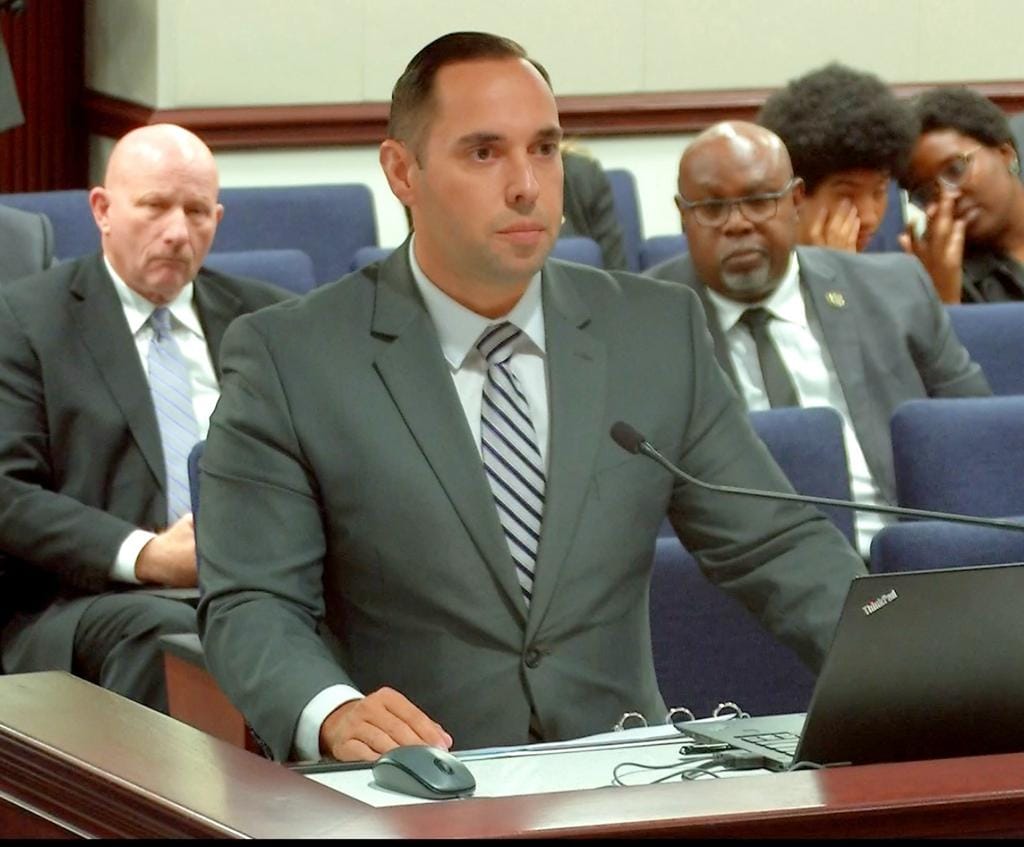
Outcry over a bill that would help developers raze and replace old, coastal and sometimes historic buildings didn’t crumble after its sponsor made changes to scale back its impacts, but it certainly softened.
Miami Springs Republican Sen. Bryan Ávila, the bill’s sponsor, vowed to continue working on his measure to ease concerns historic preservationists have about it while still providing property owners more agency.
“It’s a delicate balance between property rights and history,” he said. “Certainly, I’m extremely pro-property rights; however, I do want to make sure, especially with this, that we preserve as much of our history as possible.”
Ávila’s bill (SB 1526) is called the “Resiliency and Safe Structures Act.” Its goal, he said, is to unbind property owners of older, nonconforming and potentially dangerous buildings from restrictions that local historic preservation boards impose on them.
As amended, the measure would prohibit local governments from blocking or restricting the demolition of buildings that intersect with the coastal construction control line that are either:
— Nonconforming with the National Flood Insurance Program’s flood elevation requirements for the area.
— Ordered unsafe by a local building official.
— Ordered to be demolished by a local government with jurisdiction over the property.
The property owner would then be able to construct a new building on the site at the maximum height and density for which the area is zoned.
Single-family homes, structures on the National Register of Historic Places and certain buildings within a barrier island or a municipality with a population smaller than 10,000 residents would be exempt.
The changes Ávila made to his bill Tuesday, which match it with the text of its House companion (HB 1647) by North Fort Myers Rep. Spencer Roach, are minor in language but major in impact.
He substituted as a standard for ocean proximity the coastal construction control line, a shore-hugging boundary meant to restrict seaside development, rather than a more arbitrary half-mile distance from the coastline previously in the bill.
The flood elevation standard, meanwhile, replaced a far more wide-ranging one that encompassed any nonconforming structure within a Federal Emergency Management Agency-designated flood zone.
Those alterations turned some opponents of the bill into wary optimists hoping it could be further improved before reaching the Governor’s desk.
Miami Beach Commissioner Alex Fernandez, who was among the first to sound the alarm last year when Ávila and Roach first carried the legislation, said the amendment will protect the city’s more than 800-building Art Deco District that generates roughly $119 million yearly in state sales taxes.
But while the changes put Miami Beach “in a much better position,” he said, the city still has reservations about the bill’s language, particularly as it relates to so-called “unsafe structures.”
“Not all unsafe structures are the same,” he said. “Some unsafe structures come out of a simple elevator violation, or someone might do work without a permit, or you have a leak in a building and a building official may use that as a method to achieve compliance. But that might not mean that the building is unsafe for occupancy.”
Representatives from the city of St. Augustine and the Florida Trust for Historic Preservation said they also supported Ávila’s amendment.
Others said the bill still isn’t shovel-ready.
Kim Dinkins, policy director for 1000 Friends of Florida, said her organization is concerned about the state preempting local governments on building heights for replacement structures.
“It would have the potential to change the face of some of our state’s most iconic communities and put even more people at risk due to increased density or intensity in these highly vulnerable areas,” she said, adding that the bill “runs counter to the Legislature’s significant investment in improving resiliency.”
Daniel Ciraldo, Executive Director of the Miami Design Preservation League, said he was grateful to see the Art Deco District “off the chopping block for now,” but took exception with the newly added flood elevation requirements.
“I don’t know about your districts, but in my district construction’s got to go way up here,” he said, raising his hand above his head. “And if we say that our historic buildings are automatically unsafe because they’re not all the way up at that level, we will put them in harm’s way, our economy in harm’s way and a lot of our heritage at risk.”
As he’d done in prior discussions of the bill, Ávila said the changes wouldn’t be needed if local historic preservation boards acted less liberally in their designations.
“One of our cities, Miami Beach, (has) seven structures that are deemed historic (on the National Register of Historic Places). The local historic board has deemed 2,600 structures to be historic,” he said. “There’s a clear discrepancy there … because not everything can be historic. We also need to prioritize safety when it comes to these structures.”
SB 1526 has one more stop at the Senate Rules Committee before reaching the chamber floor. HB 1647 awaits a hearing before the first of three committees to which it was assigned.




One comment
Dont Say FLA
January 30, 2024 at 9:48 pm
While this sounds like a step in the right direction, ultimately all that happens is more corruption via G0P PAC money being funneled into local elections that otherwise wouldn’t have mattered all that much to anyone but the locals.
Comments are closed.